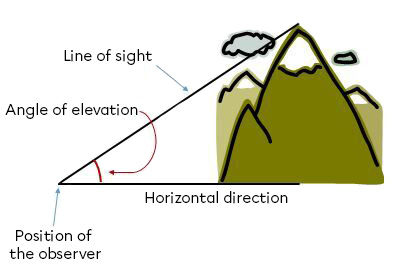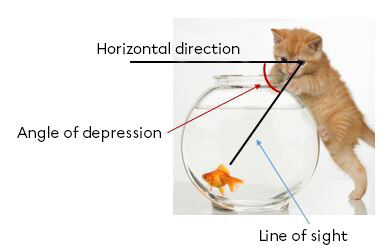The angles of depression and elevation are angles which depend on the position of an observer in relation to the object observed.
The angle of elevation is an angle formed by the horizontal and the line of sight when the observed object is higher than the observer.
When we observe a bird in the sky, the top of a building, or the top of a tree, our gaze is directed upwards.

The angle of depression is an angle formed by the horizontal and the line of sight when the object observed is lower than the person observing.
A fisherman who observes fish at the bottom of the lake or the hiker who admires the Grand Canyon both have their gaze directed downward.

The angles of depression and elevation are often described with the help of the Pythagorean theorem, because the line of sight constitutes the hypotenuse of a right triangle and one of the legs corresponds to the horizontal direction.
In the drawings below:
-
The angle of depression is the angle formed by the horizontal line (1) and the straight line drawn between the eye and a point below the observer (2). The horizontal line (1) corresponds to a leg of a right triangle while the line of sight (2) is the hypotenuse of the same triangle.
-
The angle of elevation is the angle formed by the horizontal line (3) and the straight line drawn between the eye and a point above the observer (4). The horizontal line (3) corresponds to a leg of a right triangle while the line of sight (4) is the hypotenuse of the same triangle.
